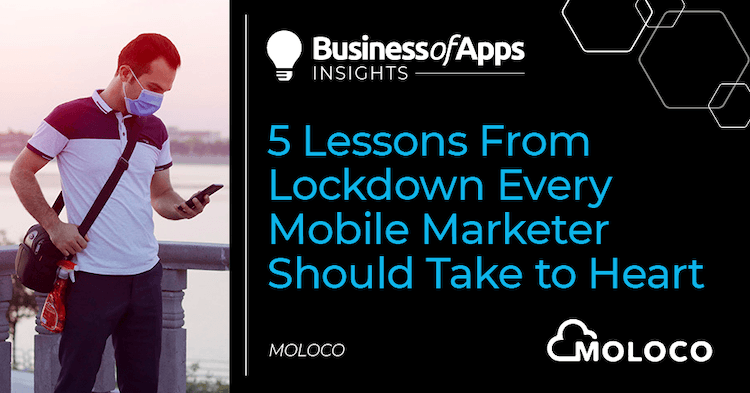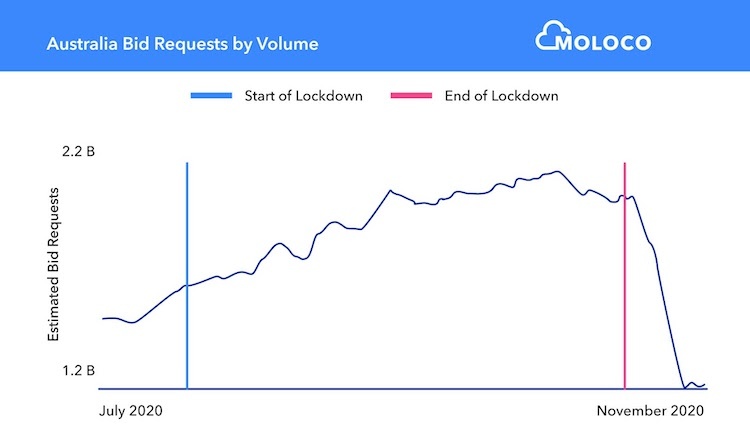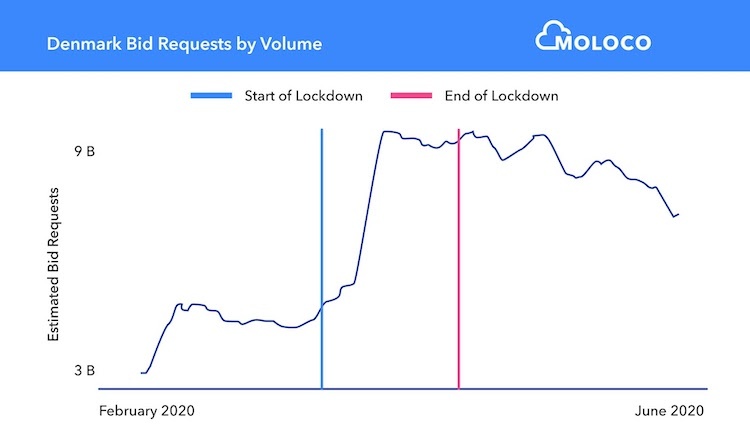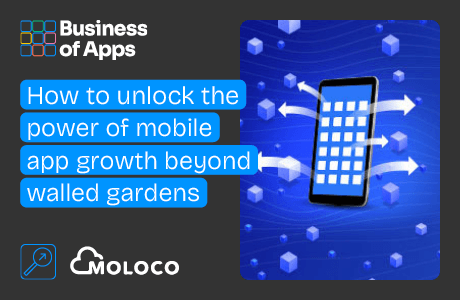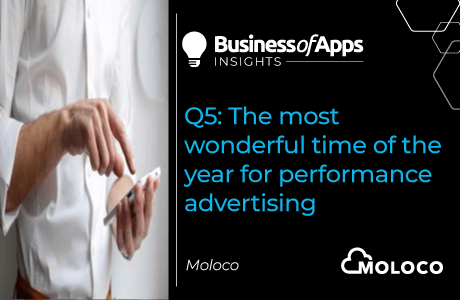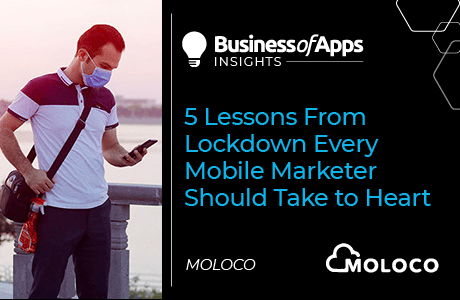The global lockdown caused by COVID-19 changed the way people use their mobile devices.
Cut off from friends, family, and their workplace, consumers turned to their phones. Downloads skyrocketed and hours spent in front of the screen ballooned, leading to sharp increases in organic growth and advertising inventory.
But lockdowns won’t last forever, and when they’re lifted, we’ll all need to be prepared to face a brave new world. Marketers would do well to remember some of the harsh lessons they were made to learn during the early days of the pandemic, especially when it comes to measuring success and understanding how to connect with their customers. Adversity revealed some evergreen truths that could be easily forgotten when things return to “normal”.
Here’s what marketing professionals need to keep in mind as they move into a post-COVID future.
Keep success contextual
Nothing can take the wind out of a marketing team’s sails like failing to achieve a goal. The best way to avoid that is by revisiting targets often and keeping them rooted in real-time market conditions.
For example, consider for a moment that 2020 was an outlier in most respects. Screen time (and advertising inventory) increased dramatically during a lockdown. Ecommerce evolved from a convenience to a necessity as consumers moved away from buying non-essentials like clothing online and invested in groceries and home improvements.
Think critically about what realistic post-lockdown targets might look like for your business given the massive changes in mobile engagement levels that lockdowns, and their endings, can trigger. The volume of available programmatic inventory skyrocketed when initial lockdowns went into place, but as programmatic bid request data from the MOLOCO Cloud platform shows, things can change dramatically almost overnight.
Source: MOLOCO
Source: MOLOCO
As seen above, the end of an extended lockdown in Australia led to a sudden and precipitous drop in mobile app engagement and programmatic bid requests of almost 50%, while the decrease after Denmark’s much shorter restriction period was more gentle.
The degree of decrease was also consistently impacted by the type of restrictions in place. Countries with more strict measures saw more dramatic peaks and valleys than those with fewer. Remember that “success” in one country may look completely different than in another. Set clearly defined targets, but be ready to adjust strategies quickly in response to data.
Share your values
The pandemic crisis, in addition to political volatility, shifted consumers’ priorities, or more accurately, made them re-evaluate what truly mattered to them. They’re more interested than ever in a business’ values and how they use their influence to make the world better. 71% of consumers prefer to buy from a company whose values align with their own. Marketing needs to communicate a brand’s values in an authentic, tone-appropriate way. The messaging needs to connect on a human level, speaking in a way that treats the consumers’ concerns with respect, addressing them head-on.
Chinese food chain Panda Express did just that with their mobile-based Lunar New Year experience that would let families who couldn’t be together during the pandemic celebrate the holiday together. Customers who visited PandaLNY.com on their phone could send digital versions of lucky red envelopes, a traditional New Years’ gift, to their friends and family. The effort, in addition to other New Year initiatives the company transformed to work within pandemic constraints, illustrated the importance Panda Express places on Chinese culture and traditions.
Build relationships
That said, don’t confuse appreciation with consumption. The lockdown created a great deal of economic uncertainty, making revenue a tenuous metric for marketing success. It would be a mistake to focus marketing efforts solely on segments likely to impact revenue immediately. Even if consumers aren’t in a position to buy, they are in a position to engage. Creating content around values and experiences nurtures conversations with consumers and lays the foundation for relationships that are beneficial in the long run. Build a rapport with them now, and you’ll reap the benefits when they’re in a position to act.
Mobile retention and loyalty programs are an excellent way to stay engaged with your audience even when they’re not spending. You can build a solid reward program for any kind of app, but in the context of a mobile game, consider what objects hold real value for your users, then design a program that makes them attainable. One example is a points program that rewards for completing in-game actions on a certain number of consecutive days with points that can be cashed in for weapons, rare objects, or unique cosmetics.
Keep creative fresh
The sudden arrival of initial lockdowns threw more than a few marketing teams into crisis-mode, underscoring the importance of creative agility. Campaign creatives that worked pre-lockdown, or even during, may feel out of touch in a post-lockdown environment. Given the speed at which the modern news cycle moves, marketers looking to capitalize off topical trends need to be ready to turn on a dime.
KFC’s had to rethink how it was going to handle Mother’s Day, traditionally the chain’s biggest sales day of the year. Past campaigns like the “Chickendales” would’ve felt tone deaf during lockdown, so the company wisely pivoted to something that made more contextual sense: virtual Mother’s Day dinners hosted on Facebook Messenger.
As lockdowns lift, remember that consumers are in a heightened emotional state and reactions to a misstep will likely be disproportionate to the infraction. Be ready to shift quickly and if creative falls flat or worse, offends, apologize quickly and sincerely. The upside of an emotionally exhausted public is that they’re more forgiving of mistakes, because they’re making plenty themselves. Solidarity, remember?
Post-lockdown and beyond
The most important thing marketers need to remember in a post-lockdown marketplace is that everyone has something new to learn. Consumers are going to have to relearn how they navigate the world. Jokes about forgetting how to socialize aside, many questions have yet to be answered. Will remote work continue to be standard? How quickly will the economy recover once restrictions are fully lifted?
The only thing that’s absolutely certain post-lockdown is that mobile devices will remain an integral part of consumers’ lifestyles. The details of how they’re used will change, but it won’t happen overnight. Pay attention to trends, observe your data with an open mind, and be prepared to challenge your own expectations. Lean into the ambiguity and take the journey with your target audience.



